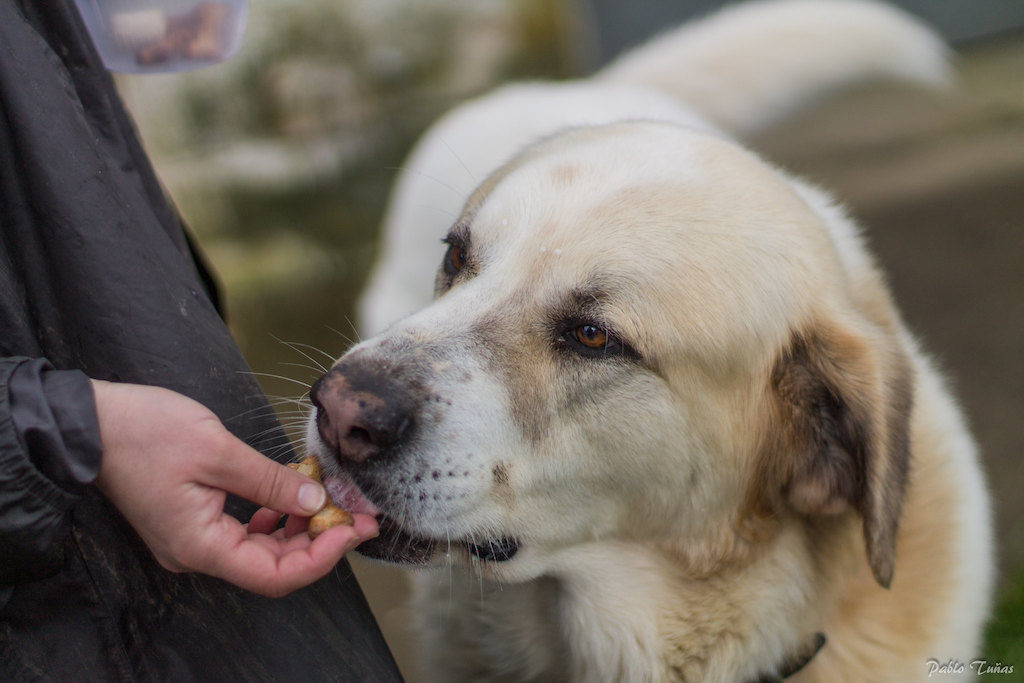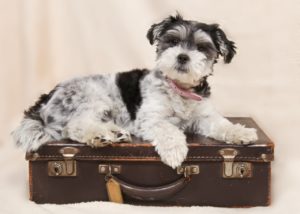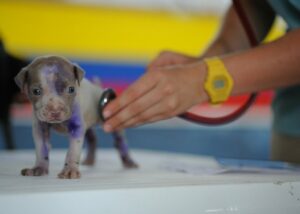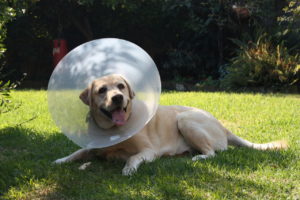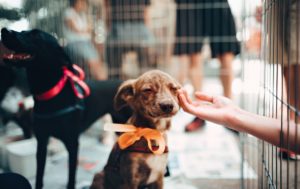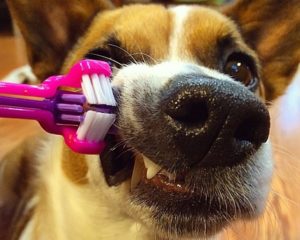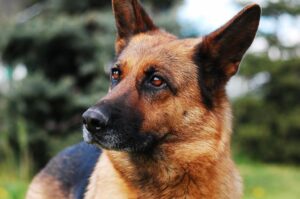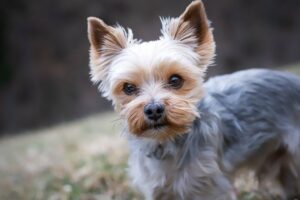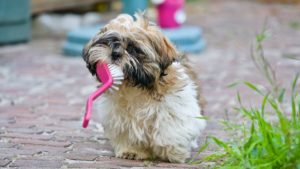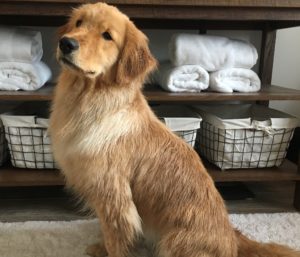Dog obesity is very common nowadays: both in the U.S. and Australia approximately 1/3 of dogs are overweight. In the UK, 59% of dogs are reported to be obese so it seems to be a dangerous global trend. Consequently, an overweight dog is more likely to suffer from diabetes, osteoarthritis, cardiovascular disease, liver disease, cancer, and ultimately, shorter life span and a lower quality of life.
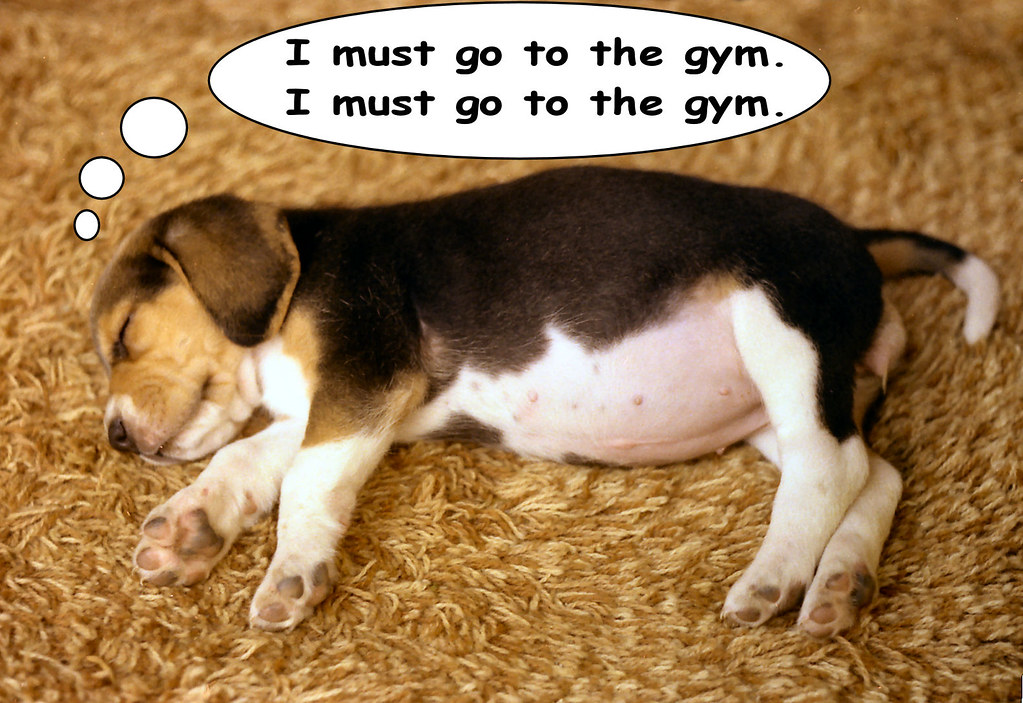
And we all know how much dogs like to eat. Unlike cats who eat when they’re hungry and until full, the majority of dogs are not that gracious. In fact, they would eat until they explode, literally. But, obesity creates a variety of serious problems to your dog’s health.
It is no secret that dogs can very easily gain weight. Especially inactive and neutered ones can get fat very easily. But, weight management is your responsibility as you are the one who gets to control what your dog eats. So even if this unhealthy scenario happens, it is up to you to react as soon as possible and help your dog lose those additional kgs in a safe manner.
After all you’d never let anyone call your dog a fat dog! So let’s work on your dog’s diet strategy!
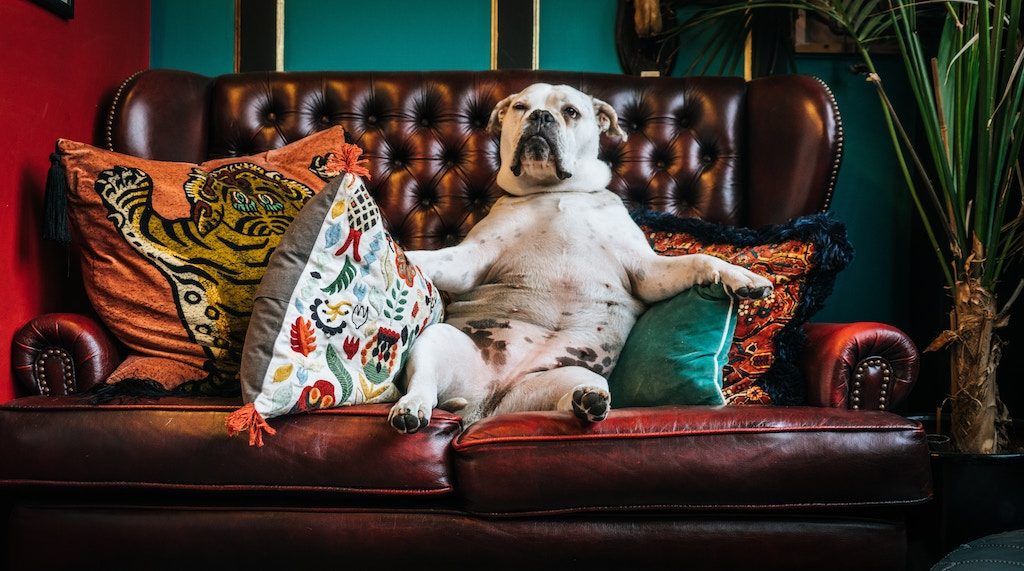
What is dog obesity caused by?
An Australian study in Preventive Veterinary Medicine has found that dog’s obesity is caused by 3 factors:
- Genetic pre-disposition
- Reproductive management
- Poor dietary/exercise management – the human factor.
So, a third of it is up to you! And regardless if the first two are favourable or not, the third factor is the one which makes all the difference, so let’s focus on that human factor of influence.
Tip #1 – Adequate food in the right amount
The importance of feeding your dog with adequate food cannot be stressed enough. Neutered dogs should eat ‘sterilised’ kind of food. Each breed has its own genetic predispositions as mentioned above making the animal more susceptible to certain medical conditions and low metabolism.
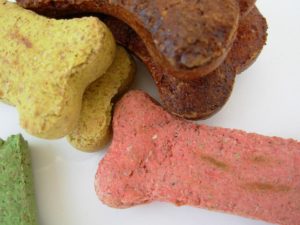
The rule of thumb for an ideal weight-loss diet is for dog’s meal to be high in protein, low in carbohydrates, and moderate in fat. But, each dog is different and you must learn about your dog’s specific breed and honour its characteristics while creating your dog’s menu. For example, breeds who are most prone to gaining weight are Beagles, Cocker Spaniels, Cavalier Spaniels, Bulldogs, Labrador Retrievers and Pugs. If your dog is from this joyful group, you want to opt for foods that are lower in calories right from the start!
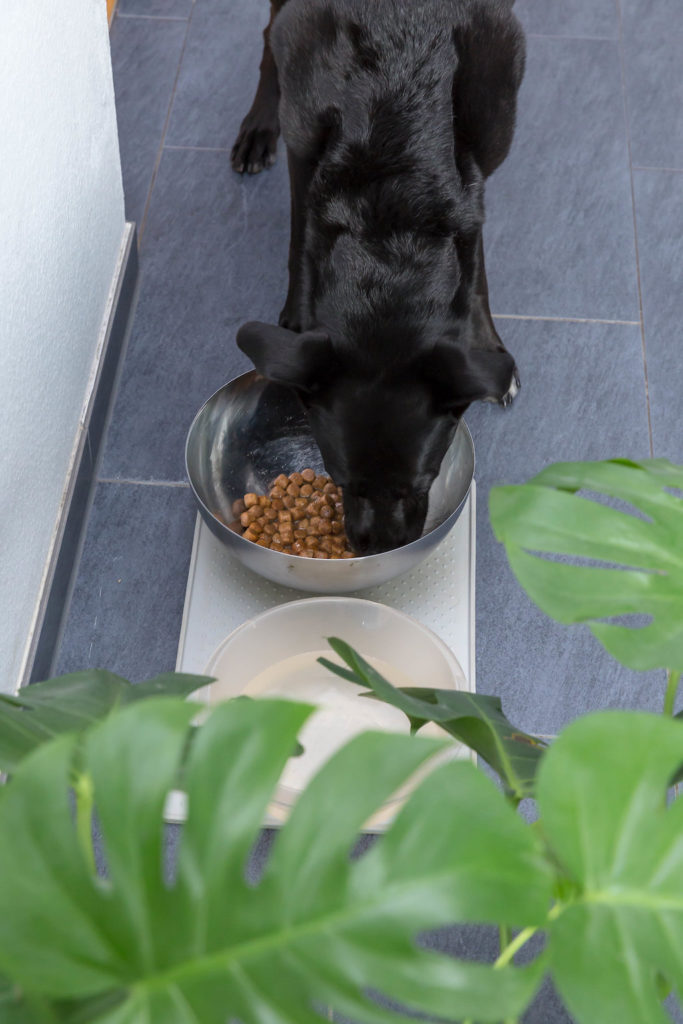
It is all about choosing each ingredient wisely – and if buying commercial foods, make sure that you actually read the label as some can contain too much fat, usually coming from poultry (a common allergen). Commercial foods contain amount guidelines but consult your vet as he or she might suggest to take a few grams out – you’ll be surprised how quickly the results will appear!
Any kind of change needs to be introduced GRADUALLY!
If a change is needed, make sure to introduce new food to your dog in a gradual manner. So, on the first day, add only 1/3 of the new food, 2/3 on the second day and then switch entirely on the third day. Needless to say, make sure you track how your dog is handling it – i.e. dogs can often get diarrhea when switching to a new type of food, especially from commercial to home-cooked, etc. If possible, treat your dog with organic food as pesticides and additives can harm your dog just as much as they are toxic for us.
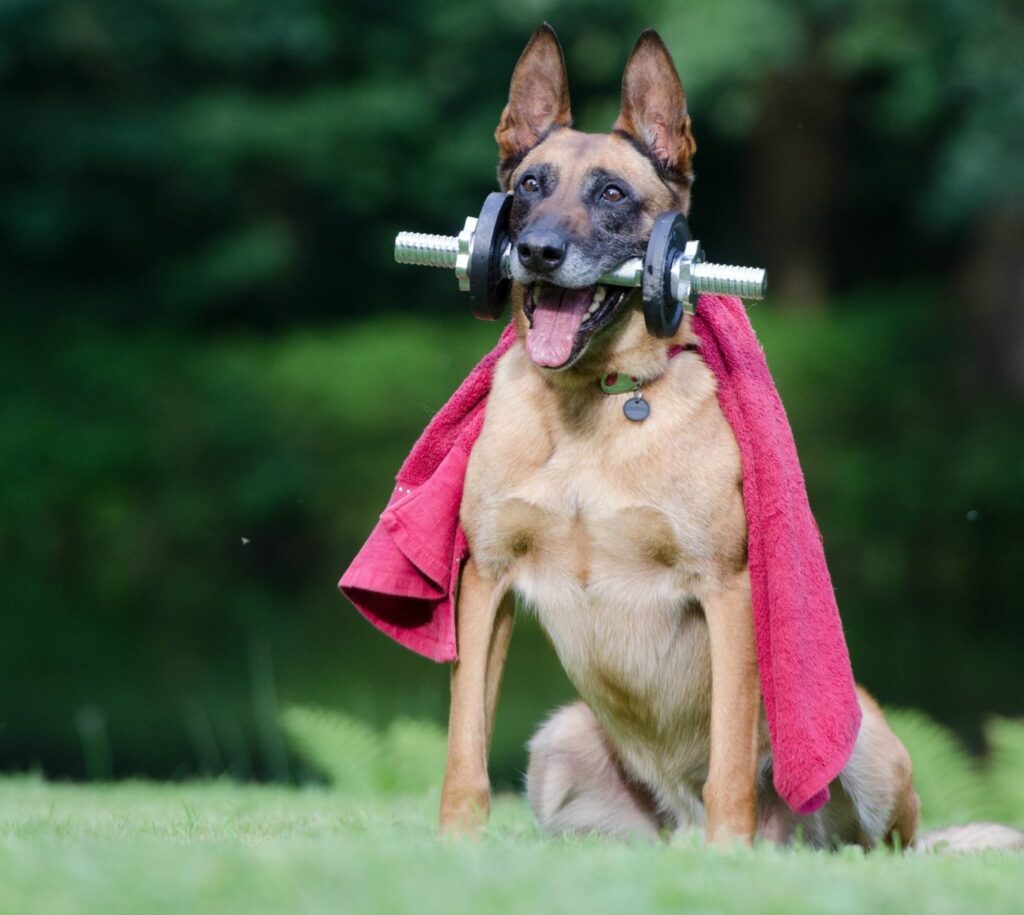
Beware of allergies
Dog allergies are very common nowadays. Some of the most common ingredients that dogs have intolerance to are chicken, beef, eggs, etc., but this is also individual and it is up to you to observe how your dog reacts to new food and track down the irritants, if any.
Tip #2 – Feeding ritual
Do not feed your dog late as he or she cannot burn those calories while sleeping. Ideally, feed your dog after a nice walk. This is what Cesar Milan advises as part of his training, so the dog can feel as if he or she has earned the meal. If your dog is eating too fast, besides obesity, it can also lead to bloating and this can be very dangerous. If this is the case, try feeding your dog smaller portions throughout the day or get the Brake-fast dog food bowl that has obstacles in the bowl itself so the dog has to eat around them and therefore, slow down the eating pace.

Tip #3 – Exercise
The main factors that ultimately determine your dog’s health are food and exercise. But unlike food, sufficient exercise is crucial both for your dog’ physical health and overall wellbeing. Lack of exercise does not only contribute to obesity, but can make your dog anxious, unhappy and impossible to handle. Getting a dog means taking the time to walk it daily, as much as the breed’s characteristics require as well as devoting special time for training. Arming yourself with patience and devotion is a must. Remember, only a well-exercised dog can be a healthy and happy dog.
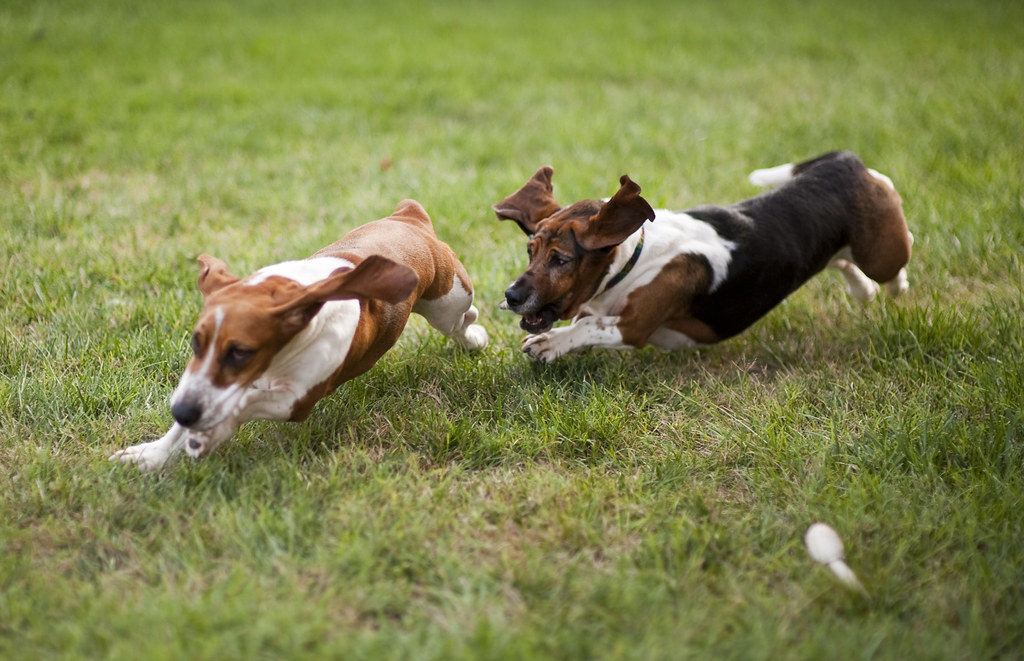
Tip #4 – No cheating!
The rules are simple, not having an overweight dog is all about discipline. So, don’t overdo it when it comes to treats. Give them only when your dog has earned them, as opposed to buying some love because you came home after a long day or because your dog is just soooo cute. You might also want to rethink some treats after carefully reading the ingredients list. Perhaps it would be best to simply take some of your dog’s main meal and use it instead of treats during the day. Needless to say, make sure that you reduce the main meal size accordingly!
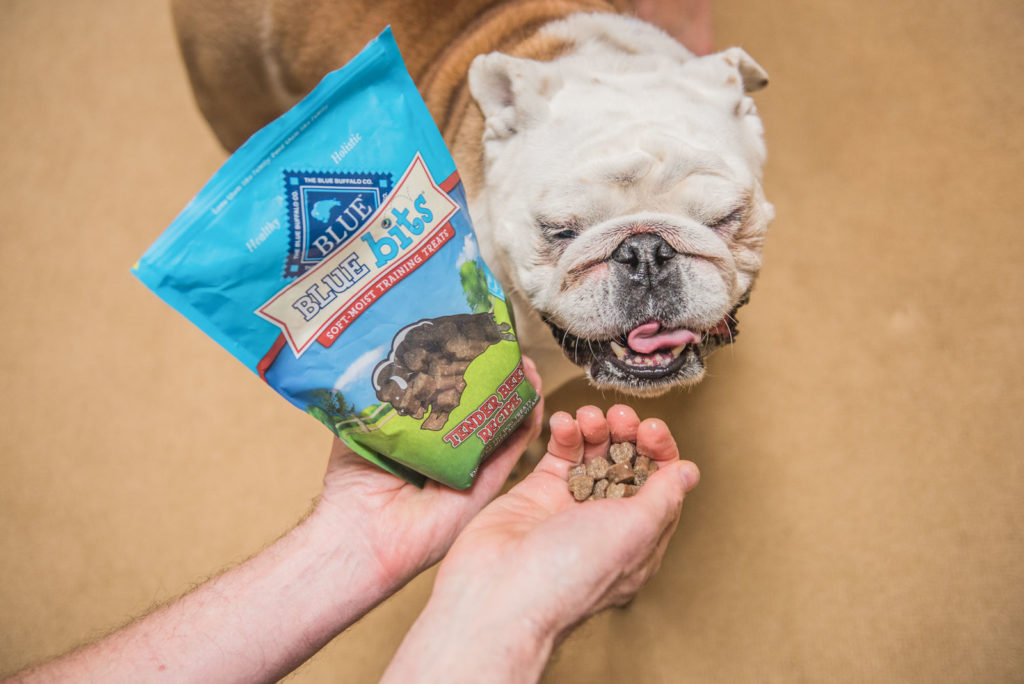
This is even more emphasised when it comes to table scraps or any leftovers which are a big NO. Don’t ever forget, some human food can even be toxic for your dog! Simply put: you have to say no to those adorable puppy eyes! It’s for its own good. This is not only dangerous for your dog’s health and wellbeing, but also for your nerves! You could end up with a begging dog and there is no stopping once the squealing begins, it can only get worse. Your dog can end up jumping like a yo yo to get the food and then it’s too late.
Remember, just like us, dogs can easily get accustomed to ‘better’ conditions instantly, but it’s really up to you to prevent this temptation. Would you go back to commercial low-fat food after tasting a delicious homemade meal? Probably not.
Tip #5 – Use the power of Supplements
Supplements can be of great help to balance your dog’s meal. Smaller breeds tend to have anal gland issues – so make sure your dog gets sufficient amounts of fiber and if necessary, add it as a supplement. For other breeds, less fiber and grain-rich foods is better! Cavalier Spaniels are more prone to heart-valve disease so make sure their diet consists of omega 3s. The list is endless and again, breed and dog-specific. Overweight dogs are often the result of owners who just don’t bother doing the research – don’t be one of them!

You want your dog to get good fats, lean meats, vitamins A, B, C, D and E. Vitamin C, a very powerful antioxidant, should form part of any diet change to strengthen the immune system along with Vitamin A (remember how your parents told you to eat carrots for better vision – that was also about Vitamin A!). Vitamin D is very important for healthy muscles and bones as it helps in regulating the calcium and phosphorous balance.
And don’t forget Vitamin E for cell function and fat metabolism. In fact, vitamin E is so useful that you can even use it for ear infections. Just pierce through the capsule and rub your dog’s ear gently with the liquid. As for B vitamin complex – well, it regulates pretty much everything, from enzymes to hormones and metabolism. Commercial foods usually contain these, but if you are cooking light organic food for your dog, make sure you add these in. Poor quality food might be good for your wallet is a sure way to having an overweight dog, while opening the door to many health problems!
Overeight dog? There is no general rule!
It is up to you to consult with your vet and learn about your dog, as well as observe him or her while making these changes. Make your dog’s diet a family project and a fun learning experience. Your loving best friend deserves it!
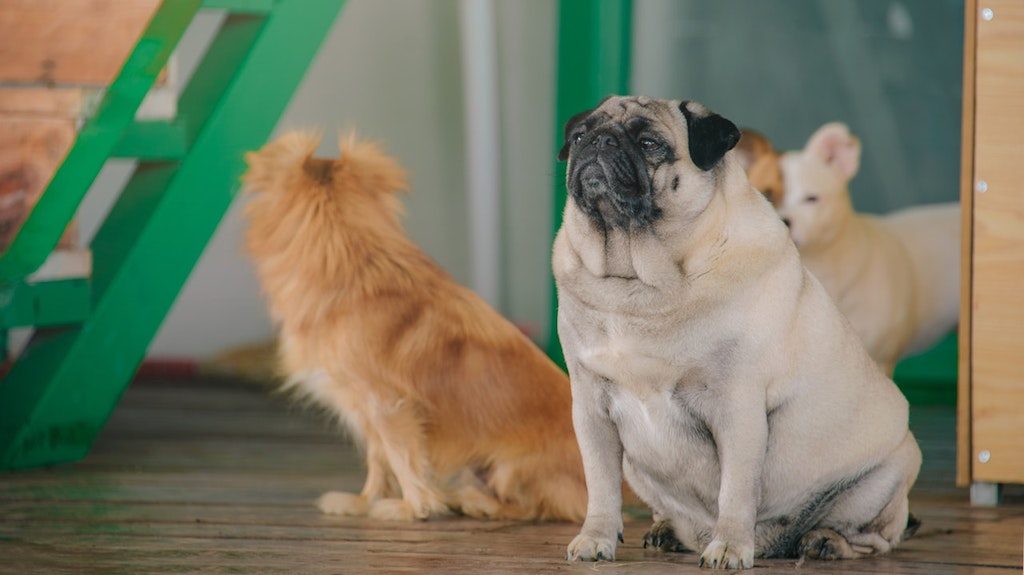
Based on these tips, you can find the cause of your dog’s obesity. Is it poor quality food? Or too much food? Table scraps? Insufficient exercise? The first step is identifying the cause. Then you get to mend it and make sure the remaining categories are also checked off the list and the result won’t fail.
Don’t be scared by the genetic or breed predispositions – you can make a difference!
Just because some breeds ‘tend’ to suffer from a disease it does not mean that your dog will too! And you can greatly affect the outcome by properly feeding and exercising your dog!
Let’s hope that vets will focus more on finding new proactive ways to prevent obesity as opposed to just treating its consequences. But at the end of the day, you are the one who has the main role in your dog’s health motion picture and we are here to help so your best furry friend lives a long and healthy life by your side. After all, your dog does not want to be a fat dog :)
